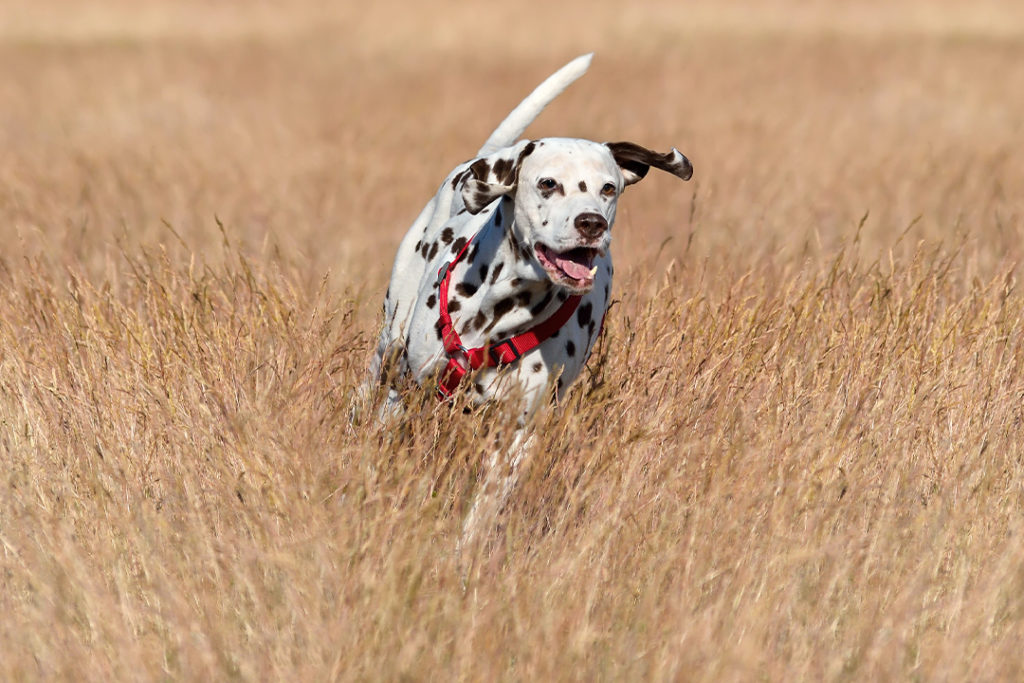You might have a tube of sunscreen in your cabinet to protect your skin against the sun’s damaging rays, but what about your pooch? You might wonder “don dogs need to wear sunscreen?”, since they’re covered in a layer of fur. According to the American Kennel Association, dogs can also get sunburned too, and some breeds are at higher risk than others.
Why are sunburn and unprotected sun exposure a problem for dogs? It’s not just skin redness or sunburn that’s the issue. Research links sunburn and unprotected sun exposure in dogs with a higher risk of some types of skin cancers, including malignant melanomas, hemangiomas, hemangiosarcoma, and squamous cell carcinoma. Some, like hemangiosarcoma and malignant melanoma, can be life-threatening to a dog.
The area more prone to sunburn for a dog is their tummy. Don’t assume your dog’s tummy isn’t exposed to sunlight. Many dogs lie on their back or side outdoors, exposing their tummy to sunlight. The risk of sunburn is even higher if a dog lies on their back or side on a lightly colored surface.
Dogs at Higher Risk of Sunburn
Dogs most at risk of sunburn and the associated risks are dogs with thin coats and those with lighter fur, especially white dogs. Breeds at higher risk include greyhounds, whippets, collies, pit bulls, bulldogs, boxers, German shorthaired pointers, Australian sheepdogs, and dalmatians. Having a heavier or thicker coat of fur offers some protection. But dogs have less protective hair on their undersides, which is why sunburn occurs most often on the underside of a dog.

One dog breed at high risk if the Chinese crested dog and other hairless dog breeds. These dogs definitely need protection from the sun’s rays if they spend time outdoors.
Choosing a Safe Dog Sunscreen
You might think you and your dog can share a sunscreen. Don’t do it! Some ingredients in human sunscreens are toxic to dogs if they ingest them. Two ingredients to watch out for are para-aminobenzoic acid (PABA) and zinc oxide. That’s why it’s safest to buy a sunscreen specifically made for dogs. Look for one with a sun protective factor (SPF) of at least 30. Look for one with no added fragrance or colorings.
If your dog has allergies, apply the sunscreen initially on one small area and recheck the spot in 24 hours. If there are signs of redness or irritation, your dog may be allergic to some ingredient in the product. You can also buy spray sunscreens for dogs, including one approved by the FDA, but be careful when you apply it, so your dog doesn’t inhale the contents.
Other Tips for Protecting Your Dog Against Sun Damage
Be sure to apply sunscreen at least 20 minutes before your dog goes outdoors. Most dog sunscreens need to be reapplied every 5 hours and immediately after swimming. Avoid getting any of the product into their eyes. The areas to focus on are regions where there is little hair, like the tummy and flank areas. The nose is another area to cover on a dog, since there’s no fur for protection against the sun.

Sunscreen doesn’t offer 100% protection against sunburn, especially if you don’t apply it properly. The sun’s rays are strongest between 10 a.m. and 4 p.m. Limit your dog’s sun exposure during those times to reduce their odds of sunburn, sun damage, or heat stroke. Make sure your canine best friend has plenty of water available too.
The Bottom Line
Dogs also need sunscreen, especially certain breeds, including those with thin coats and light fur. Dogs love spending time outdoors, but make sure regions of their body that have little fur are protected from sun damage. Fortunately, there are now sunscreens made exclusively for dogs that are safe and effective. Do your research and choose one with non-irritating ingredients that doesn’t contain zinc oxide or PABA. You and your dog will be happier knowing your canine pal is protected from the sun.






